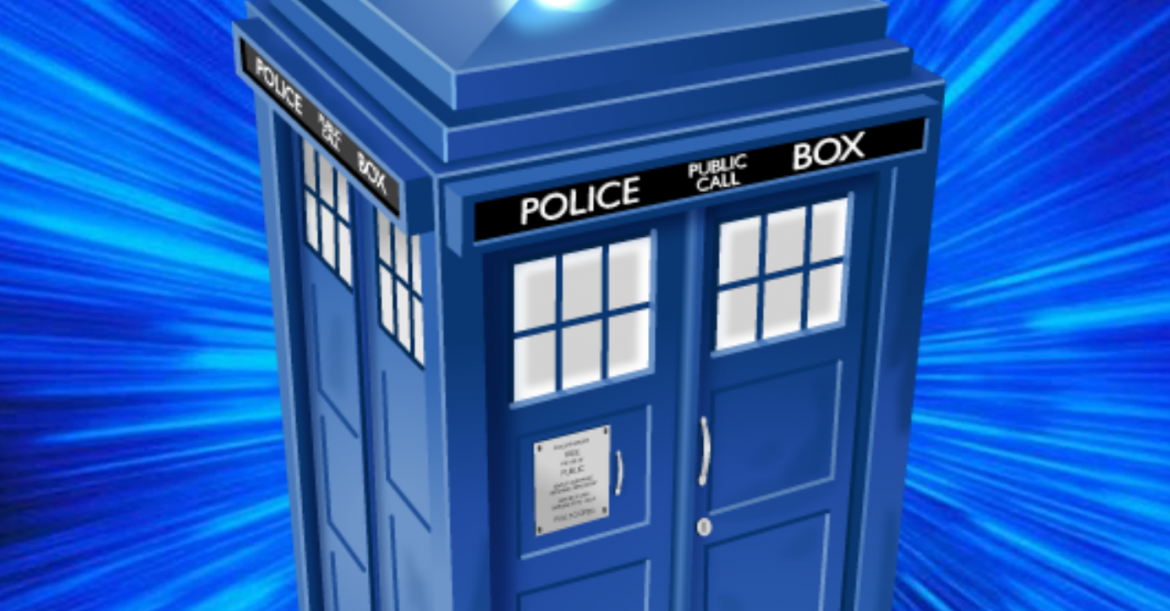
(EDA #1-6: The Eight Doctors through Alien Bodies)
Hi everyone,
I’m back with another article, today’s topic is the Eighth Doctor Adventures (abbreviated as “EDA” for here on out) from BBC Books that ran from 1997 to 2005 and consisted of a whopping 73 novels. Because these novels are old and I’m using my local library to read them, there may be gaps in the record. Because of the amount of time that it takes to get a hold of these, and the amount of time it takes to read them, this article will only have a handful of stories discussed. Also, I don’t want to even think of the length this would be if I tried to fit all 73 in one document. While most of these have yet to be reviewed on the show, there is the occasional review which I will note as I come to it.
As always, there will be spoilers. Because the newest of these novels is sixteen years old, I am firm in the belief that the statute of limitations on spoilers has lifted. However, that said, if you haven’t read these and are trying to avoid spoilers, you have been warned.
The Stories
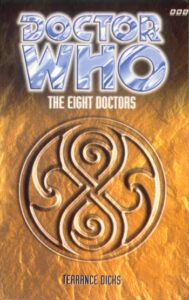 The first book we have (not counting the novelization of the film which is sometimes stuck in this list) is The Eight Doctors by Who veteran Terrence Dicks. We pick up right after the TV Movie with the Doctor reading The Time Machine. Soon, however, he falls into a trap set by the Master in the Eye of Harmony that gives the Doctor amnesia, again, beginning a surprising motif that seems to reoccur off and on throughout the Eighth Doctor’s life.
The first book we have (not counting the novelization of the film which is sometimes stuck in this list) is The Eight Doctors by Who veteran Terrence Dicks. We pick up right after the TV Movie with the Doctor reading The Time Machine. Soon, however, he falls into a trap set by the Master in the Eye of Harmony that gives the Doctor amnesia, again, beginning a surprising motif that seems to reoccur off and on throughout the Eighth Doctor’s life.
Next, we’re introduced to our new companion, who barely features in the novel. Sam Jones is a sixteen-year-old nice girl running from the local drug dealers at her school. Ending up at Totter’s Lane, the arrival of the Doctor saves her life. The Doctor is arrested for drug possession and we get an amusing interrogation in the police station. The Doctor escapes the police and leaves in the TARDIS.
The Doctor then travels across his timelines to regain his memories from his previous selves. Meanwhile, on Gallifrey, this crossing of timelines is noticed and brought to the attention of President Flavia.
To regain his memories, the Doctor passes through old stories from the TV show. The first two mainly focus on Eight where we visit An Unearthly Child and convince the First Doctor not to kill Za with a rock and The War Games where the Second Doctor is convinced to call in the Time Lords. These are primarily told from the Eighth Doctor’s perspective and don’t really add to the original stories.
Then we get to the Third and Fourth Doctors and get the aftermaths of The Sea Devils and State of Decay respectively. Here, with The Sea Devils, we get the Master’s escape to hijack a car and return to Devil’s End for his TARDIS. The Eighth Doctor doesn’t even show up until the Third Doctor’s return to UNIT HQ. And with State of Decay, we focus on Romana getting captured by vampires with Eight showing up partway through the adventure. I suppose that it makes sense that stories that Terrence Dicks wrote or had a heavy hand in would be more fleshed out than others.
Moving to the Fifth Doctor, we have the Doctor, Tegan and Turlough returning to the Eye of Orion after The Five Doctors. It’s here that the machinations on Gallifrey catch up to the Doctor with a Time Lord enemy partnering with the Agency (presumably the CIA) to use the Time Scoop to lay a trap that will hopefully kill the Fifth Doctor, and therefore the Eighth Doctor. And it’s well-done. With the trap sorted, we move on to the Sixth Doctor.
The Sixth Doctor segment is really fun and takes place between Terror of the Vervoids and The Ultimate Foe. Six is being taken to execution when Eight arrives. They then travel from the CIA space station to Gallifrey and hold a trial of their own. Here, Eight and Six get fairly equal screen time before the timelines realign and Six returns to face the events of The Ultimate Foe, leaving Eight to get some decent screen time of his own.
Finally, we have the Seventh Doctor going to Metabelis III in the midst of a mid-life depression where Eight saves him from a spider. With all his memories intact, the Doctor returns to save Sam from the gangsters. He succeeds and she launches herself into the TARDIS as it dematerializes and essentially forces the Doctor to take her on “one trip”.
So that’s the first original Eighth Doctor Adventure after the TV Movie and its novelization. How is it? Personally, I enjoyed it. It’s a fun multi-doctor adventure. Unfortunately, it seems that most of fandom doesn’t appreciate it. Yes, it’s primarily fan service and we don’t really learn much about the new Doctor or companion with the majority of the novel focusing either on established past Doctors or Gallifreyan politics. Yes, the new companion barely feels like she’s there and through most of the book feels like an afterthought.
That said, I really enjoyed it. I think it was one of the first Doctor Who novels I read, and I remembered enjoying it. Re-reading it now, I can see some of the complaints about the thin characterization of the Eighth Doctor and the major fan service. However, I still found it fun especially when we get to the Third through Sixth Doctor segments with the Fifth Doctor segment just being really fun and the Sixth Doctor segment where Six and Eight put the “Trial” on trial and what basically amounts to a bloodless revolution on Gallifrey is also really fun.
It may be that I have all the Big Finish Eighth Doctor stories in the back of my head giving Eight more personality and am not going entirely off the TV Movie (that I don’t think had a home video release yet) as they were at the time of original release. But, I really enjoyed this. It helped that I could hear McGann’s voice well. It’s going to be hard going forward with Sam because I hear her speaking with Lucie Miller’s voice which I’m fairly certain isn’t at all accurate. Maybe Big Finish needs to do some novel adaptations of a few of these or some new stories with Eight and Sam. Anyway, I rate this at 8/10 because while really fun, it’s not without flaws. Also, Glenn reviewed this novel in TTV #86.
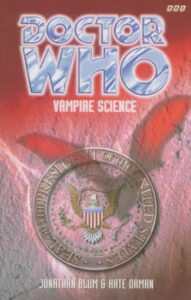 Next, we have Vampire Science, written by Kate Orman and Jonathan Blum, which sees the Doctor and Sam hunting vampires in San Francisco. We start in 1976 where the Doctor kills a Vampire and in the process meets Carolyn McConnell, a student who wants to cure cancer. Then we jump to 1997 where the bulk of the story takes place. The Doctor, Sam, Carolyn and Brigadier-General Adrienne Kramer of the US Branch of UNIT, work together to bring down a coven of Vampires that, as the novel progresses, are on the verge of civil war. The leader of the vampires, a 900-year-old vampire named Joanna Harris, is also working at finding a substitute food source. A lot is going on in this novel, but despite all that, it’s a really fun read. The authors nail the Eighth Doctor’s energy and voice. I could easily hear McGann in the dialogue. A great accomplishment considering all they had was the TV Movie.
Next, we have Vampire Science, written by Kate Orman and Jonathan Blum, which sees the Doctor and Sam hunting vampires in San Francisco. We start in 1976 where the Doctor kills a Vampire and in the process meets Carolyn McConnell, a student who wants to cure cancer. Then we jump to 1997 where the bulk of the story takes place. The Doctor, Sam, Carolyn and Brigadier-General Adrienne Kramer of the US Branch of UNIT, work together to bring down a coven of Vampires that, as the novel progresses, are on the verge of civil war. The leader of the vampires, a 900-year-old vampire named Joanna Harris, is also working at finding a substitute food source. A lot is going on in this novel, but despite all that, it’s a really fun read. The authors nail the Eighth Doctor’s energy and voice. I could easily hear McGann in the dialogue. A great accomplishment considering all they had was the TV Movie.
Sam is a good character, and despite knowing the broad strokes of her character arc, I’m looking forward to taking the journey. A bit of time has passed between her forcing her way onto the TARDIS in the previous book and now. At some point in between novels, the Doctor left her at a Greenpeace rally and, at least according to the Tardis Wiki, went and had the adventures seen in the DWM and Radio Times comics as well as the novel “The Dying Days”. In Vampire Science, he mentions that he’s three years old, his age since regenerating. This story fleshes out Sam a lot more than The Eight Doctors did.
Carolyn is a stand-in for Grace from the TV Movie. If you look hard at Carolyn’s backstory, you can see it. Krammer makes her first official appearance here. She’d been in a fan film (referenced in the novel) starring Jonathan Blum (one of the authors) as the Seventh Doctor. She would go on to feature in a handful of Lethbridge Stewart novels, specifically Times Squared, Night of the Intelligence and Scary Monsters.
That said, this was a fun novel. Dark, but not to excess. The main villain is a pantomime villain, but very enjoyable. The Doctor is really great in this story. A great book if you like vampire stories. Despite that not being my cup of tea, I only read this because it’s Doctor Who, it was still an exciting read that was funny in places and well worth my time. There was even a Monty Python joke that might’ve been completely coincidental about “pointed sticks, shut up” that seemed to be a riff on the “Self Defense Against Fresh Fruit” sketch. I’d rate this at 8/10 because, despite the main monster not being my cup of tea, I had a lot of fun.
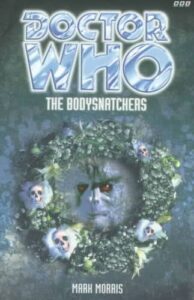 Third in line is The Bodysnatchers by Mark Morris. This novel sees the Doctor and Sam up against the third returning monster in a row: the Zygons. (This after the Time Lords, and the Master, in The Eight Doctors and then Vampires.) When the Doctor arrives in 1894 London to replace a damaged magazine, he and Sam stumble on a man scared out of his mind who is soon eaten by a monster. Teaming up with George Litefoot (and not Henry Gordon Jago), they discover a genocidal Zygon plot.
Third in line is The Bodysnatchers by Mark Morris. This novel sees the Doctor and Sam up against the third returning monster in a row: the Zygons. (This after the Time Lords, and the Master, in The Eight Doctors and then Vampires.) When the Doctor arrives in 1894 London to replace a damaged magazine, he and Sam stumble on a man scared out of his mind who is soon eaten by a monster. Teaming up with George Litefoot (and not Henry Gordon Jago), they discover a genocidal Zygon plot.
We get lots of interesting stuff here, and some okay stuff. The setting is well-realized and we get a lot of expansion on the Zygons. We get detailed descriptions of their organic technology including their ship. We’re told that not all Zygons are red, suckery warriors but most are white, non-suckery feminine scientists. But there’re are contradictions, primarily being the loss of Zygor, the Zygon homeworld. Here, we’re told it was destroyed by an enemy alien species called the Xaranti. This conflicts with later accounts of it being a casualty of the Time War, but I can easily make it work for me.
The other confusing bit for me is Litefoot. George gets involved while Henry is away on holiday. The novel makes it very obvious that, while Jago and Litefoot have remained friends, this is the first time since The Talons of Weng-Chiang that Litefoot has been involved in anything remotely alien in nature. So my thought was, how does fit in with the Jago and Litefoot series from Big Finish (which I have yet to delve into)? While the Tardis Wiki just gives a date of the 1890s for the series, aHistory gives a little different story. We have a firm date for this novel of 1894. aHistory places Talons in 1889 and says in the footnotes that the Big Finish series begins in 1892. aHistory then places the first five series of Big Finish between Talons and this. I’m accepting of aHistory’s reasoning and just accept that the timeline issues stem from this coming first. Anyway, that sidestep aside, this was a good novel. I didn’t quite have as much fun reading it as I did the previous one. But, that said, it captured the era well and the Doctor very well. The Zygon plot is enjoyable with an interesting twist on the Doctor’s part. I can very easily see McGann in the role here. I have to say that I’m enjoying Sam as a character and look forward to where they go with her arc, especially knowing bits and pieces of it. There’s also an epilogue with a later eighth Doctor returning Litefoot his gun that he left in the TARDIS during the finale that takes place later in the series.
 So, while not quite as enjoyable as the previous novel, it’s still a good read. It just takes a bit longer to really get going. This is a good Doctor Who novel, maybe not great, but still really good. Though, as I work my way through these, I’m looking forward to original monsters and new villains. As with the previous two, I have managed to read this before. In the end, I think I’d rate this at 7/10.
So, while not quite as enjoyable as the previous novel, it’s still a good read. It just takes a bit longer to really get going. This is a good Doctor Who novel, maybe not great, but still really good. Though, as I work my way through these, I’m looking forward to original monsters and new villains. As with the previous two, I have managed to read this before. In the end, I think I’d rate this at 7/10.
The next book is Genocide by Paul Leonard. This review is going to be very short as this is a novel that, short of tracking down and purchasing for myself, I am unable to acquire a copy of. Because I’m getting all these through my Library and its Inter-Library Loan program, I accept that there will be ones that I can’t get a hold of. This book is 24 years old after all.
As best I can tell, this features Eight and Sam meeting Jo Grant and Benton and dealing with an alien species subverting the course of prehistory. The big draw (or repulsion) is that the fate of Jo is very different from what we see in The Sarah Jane Adventures. The Tardis Wiki article for the novel states the following:
“The depiction of Jo in this book is difficult to reconcile with her later appearance in the SJA television story Death of the Doctor. We can perhaps imagine that this book takes place in a “rough patch” of Jo’s marriage, but she is well and truly on her own here. The word “divorce” doesn’t appear in the book, but it’s clear she has total financial responsibility for her child and herself. Moreover, she’s only got one child in this story, Matthew, who just started high school. Death to the Doctor says she’s got seven kids. It’s hard to see how she could have six more kids after Matthew, with Cliff, starting at roughly the age of thirty-five. Additionally, the separation/divorce from Cliff has left her having to hold down two jobs in Hackney. How exactly she was supposed to be globetrotting given this bleak reality is unclear.”
So, I haven’t read this book, probably never will (mainly just because of availability). It’s a step forward for the EDAs in a way, in the fact that it features a new monster. And, at the time, the fate of Jo Grant was probably a bold move. That said, this is the fourth book in a row with elements from the past being major parts of the story. As I haven’t read this, I can’t rate it in any capacity so we’ll move on to the next book.
 Fifth in line is War of the Daleks by John Peel. This is a book that is very controversial to the point where it was disowned by at least some parts of fandom. Apparently, John Peel (and according to him, Terry Nation) really disliked the resolution of Remembrance of the Daleks and the destruction of Skaro. To try and erase Remembrance from canon, Peel went and retconned the televised Dalek stories especially Destiny through Remembrance. Peel had already gotten flak for Timewyrm: Genesis, primarily the sexuality issues, but this was seemingly worse.
Fifth in line is War of the Daleks by John Peel. This is a book that is very controversial to the point where it was disowned by at least some parts of fandom. Apparently, John Peel (and according to him, Terry Nation) really disliked the resolution of Remembrance of the Daleks and the destruction of Skaro. To try and erase Remembrance from canon, Peel went and retconned the televised Dalek stories especially Destiny through Remembrance. Peel had already gotten flak for Timewyrm: Genesis, primarily the sexuality issues, but this was seemingly worse.
So, apart from the retcon issues, how is the book? In my opinion, really fun. I’m one who just kinda ignored the sexual bits in Timewyrm and enjoyed an interesting story. The same here. I fully understand why the fandom hates this book. Because it completely rewrites the televised Dalek stories to negate the destruction of Skaro in Remembrance of the Daleks, fans tended to reject this book. I understand this, as Remembrance is a great episode and I’m a bit dubious of John Peel’s claims that Terry Nation disliked that plot decision since Nation could’ve vetoed it before it went to screen.
However, that said, this was a great book that’s just fun to read. While I understand fandom’s criticisms of Peel’s Who books, I’ve found the three I’ve read enjoyable reads despite their flaws. This book (originally designed as a TV story then offered to Virgin before becoming an Eighth Doctor novel) is split into four parts split by three interludes. The interludes focus on three enemies of the Daleks: Humans and the SSS, the Draconians and the Mechanoids. The middle interlude, which features a space battle between the Daleks and Draconians, is really fun to read.
The plot sees the Doctor making TARDIS repairs, including removing the TARDIS lock. We have a group of Thals who have been fighting the Daleks, and the Quetzal, a junker ship that picks up debris from space battles for profit. The Quetzal discovers an escape pod that contains Davros in amongst the wreckage from several Dalek ships. Around the same time, the TARDIS is collected by the Quetzal.
The Quetzal is soon invaded by the Thals after they’re summoned to pick up Davros who they want to help the Thals defeat the Daleks. Not long after, the Daleks arrive and everyone is taken to Skaro for the Dalek Prime’s trial of the Dalek Race that is intended to end Davros and his insurrection once and for all. A civil war erupts between the forces loyal to Davros and the Dalek Prime while the Doctor, Sam and the Thals escape amid the chaos. There’s even a fight between the Doctor and a Dalek inside the TARDIS at the end that’s just awesome.
So, let’s tackle the elephant in the room, the massive retcon of televised Dalek history. In a nutshell, after learning of the Shoreditch Incident in the Dalek Invasion of Earth, the Dalek Prime works to ensure that Skaro isn’t destroyed by the Hand of Omega. This involves terraforming a planet into Skaro and tricking Davros, and by accident the Doctor, that this is the real Skaro. Therefore, Destiny of the Daleks and Resurrection of the Daleks are part of the Dalek Prime’s plot to trick Davros into destroying the wrong planet. Then it goes wrong when Davros creates his Renegade Daleks in Revelation leading into Remembrance. However, I actually don’t mind this. It fits with the Daleks’ deviousness and cunning, and allows for Skaro to exist in the TV Movie and then the Time War and Series 9. For me, it works. And the novel was just so much fun to read that I didn’t care. But, I understand why a lot of fans don’t like it.
In the end, despite the retcon issues, this was just a fun book to read. If they made another Eighth Doctor movie, this would make a great movie. It’s epic in scope and has a cinematic feel about it. Eight feels like Eight and Sam is an enjoyable companion (though I’m still hearing Lucie Miller’s voice coming out of her mouth). It’s a fun book that held my interest the whole time. My only real complaint about the Eight Doctor Adventures so far is the reliance on previously established characters and enemies (Time Lords/Master/Nostalgia, Vampires, Zygons, Jo Grant, Daleks). The next book, Alien Bodies, has a surprising returning villain but makes up for that in weird new ideas and plot threads that carry on deep into the series. In the end, I’d rate this at 9/10 because the retcons didn’t seem as bad as they’re made out to be and it was a really fun read.
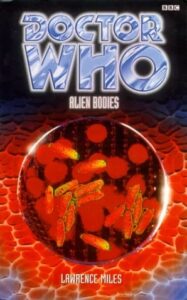 Finally, in the hope of keeping this article short and manageable, we have Alien Bodies by Lawrence Miles. This is the novel that launched several of the threads that would persist through at least the first half of the series. It’s also one of the first Doctor novels I read, and where I’ve dropped off the EDAs in the past. My dilemma here is how much do I spoil as this book in some ways relies on its surprises. But, as it is twenty-four years old, I think I’ll risk it.
Finally, in the hope of keeping this article short and manageable, we have Alien Bodies by Lawrence Miles. This is the novel that launched several of the threads that would persist through at least the first half of the series. It’s also one of the first Doctor novels I read, and where I’ve dropped off the EDAs in the past. My dilemma here is how much do I spoil as this book in some ways relies on its surprises. But, as it is twenty-four years old, I think I’ll risk it.
So this book is what lays the threads that will persist loosely through the series. It introduces us to The War in Heaven between the Time Lords and the “Enemy” (who aren’t described but are very clearly stated to not be the Daleks). It also introduces us to the Faction Paradox, a time-traveling voodoo cult that uses corrupted Time Lord tech. Finally, we get the start of the “Dark Sam” arc.
All through this book is the importance of biodata, which is more than just DNA. According to Tardis Wiki, “Biodata… contained information on a person’s history and timeline, analogous to temporal DNA. …If an individual’s biodata could be manipulated, their entire time stream could be altered.” Biodata and its uses to the “War” seem to be the main thrust of the novel.
The main plot sees the Doctor and Sam discover an auction being held in late 21st Century Borneo in an impossible city run by a Mr. Qixotl. Qixotl is attempting to sell “The Relic” which we learn is the Doctor’s body. Invited to this auction are the Time Lords, Faction Paradox, the Enemy (through their agent Mr. Shift), the Celestis (the final form of the Gallifreyan CIA through their agent Mr. Trask), UNISYC (what UNIT eventually morphs into) and the Daleks (no, the Daleks don’t appear in this as their delegate has been intercepted by the Krotons). Anyway, that’s the crux of the novel. A bunch of powers that can barely tolerate each other all gathered to bid on the Doctor’s body.
There are also seven interludes, one for each of the major players (except the Doctor and Sam) that tell the story of the Doctor’s death and the relic in roughly reverse order. Some are more enjoyable than others, though I don’t recommend reading them in reverse order, especially on your reading of the novel, as the main story and the focus of the interludes often flow together very well.
This was a fun novel. It’s thick, with a lot of interesting ideas, a rich cast of guest characters and a decent story. Throwing together all the auction attendees and the shenanigans that ensue are fun to read. There’s a lot here, but it reads fast. The Doctor is written well here and this was just a great read. I’d rate this at 9/10 because while it’s an amazing book that’s a great read, there are a lot of loose ends and obscured history in regards to the War and the Relic. Some things I understand are revealed later, while others aren’t and only hinted at. Still, definitely worth the read.
The Main Cast
 So how is the main cast so far? Let’s start with the Eighth Doctor. First of all, for just having the TV Movie to work, the authors seem to have done quite well. From my perspective, it feels like McGann’s Doctor: full of energy and a love for life. He makes things up as he goes along. The problem I’m personally having is whether the authors are actually doing a good job, or if my familiarity with the Eighth Doctor on Big Finish is making it seem like they’ve done a good job. If anything, the Doctor is at his most generic in The Eight Doctors, especially in the first two interactions with the past incarnations. That said, it feels like the authors have managed to do a good job.
So how is the main cast so far? Let’s start with the Eighth Doctor. First of all, for just having the TV Movie to work, the authors seem to have done quite well. From my perspective, it feels like McGann’s Doctor: full of energy and a love for life. He makes things up as he goes along. The problem I’m personally having is whether the authors are actually doing a good job, or if my familiarity with the Eighth Doctor on Big Finish is making it seem like they’ve done a good job. If anything, the Doctor is at his most generic in The Eight Doctors, especially in the first two interactions with the past incarnations. That said, it feels like the authors have managed to do a good job.
Secondly, we have the companion, Sam Jones. I’m not sure how I feel about Sam. She’s an okay character, who’s barely in her introductory story. The next novel has a time jump
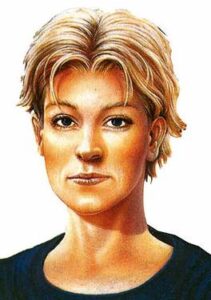
Sam Jones first introduced in Doctor Who: The Eight Doctors
and after that, she seems to do okay with Vampire Science and Alien Bodies being highlights for me in regards to Sam. I’m looking forward to further stories that expand the “Dark Sam” arc introduced in Alien Bodies. That said, Sam doesn’t really stand out much to me yet. She has potential, but she isn’t there yet with the series itself still trying to find itself.
Other Thoughts
So, I’ve read five of the first six EDAs. So far, I’ve been enjoying them. The Bodysnatchers was the worst in my eyes, and even then it wasn’t terrible. It had a slow start and took a while for me to get into it, but once I did, I enjoyed it. Despite the flaws of the others, I’ve thoroughly enjoyed them, some more than expected. I will say that this is my second time reading these, though it’s been about five years (or longer) since I’ve read them.
The biggest flaw I see with these, and it’s more a nitpick than a flaw, is the use of returning elements from the past in each novel. The Eight Doctors had past Doctors, literally sticking us in the middle of six previous televised stories. Vampire Science, The Bodysnatchers and War of the Daleks each focused on a returning monster in the form of Vampires, Zygons and Daleks/Davros/Thals respectively. Genocide, while focusing on a new monster had Jo Grant, Benton and UNIT, and Alien Bodies had the Krotons, though they weren’t the main focus of the story and were used quite well. I’m looking forward to the next six novels, of which only one has returning elements (which I won’t spoil here), so there’s that to look forward to.
In the end, it’s a strong beginning. The Doctor seems to well-written, we have a decent companion (for the most part), and while I complain about using returning elements, I understand potentially why they chose to do that. I suspect it was to entice wary fans until they built a solid fanbase. I understand that any series of tie-in material/continuations will be hit and miss, especially in a 73-book series, but so far things are doing pretty darn well.



